3M0T1NG{/n3tw0rk1ng}, 2023
︎︎︎
performance Isis Andreatta, Juan Pablo Cámara, Ahmed El Gendy, Forough Fami, Luqui Lagomarsino, Alina Ruiz Folini, Raoni Muzho Saleh, Charlie Laban Trier, Simone Gisela Weber, & Jakob Wittkowsky
music Li Yilei
costume Dynno Dada
makeup Grizolda & Hassandra
technical Bram Snijders
outside-eye Setareh Fatehi & Elisa Zuppini
mentorship Erin Manning
Maclean MC-773 & Maclean MC-825 straps, three Samsung Galaxy S9 smartphones, iPhone 14 Pro, iPhone 12 mini, iPhone X, four Optoma short-throw beamers, datapath, TP-Link router, XXL hanging gray projection mesh
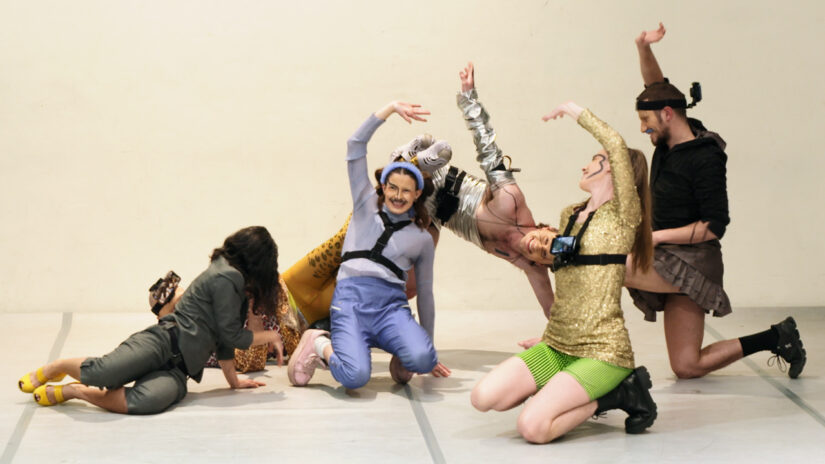
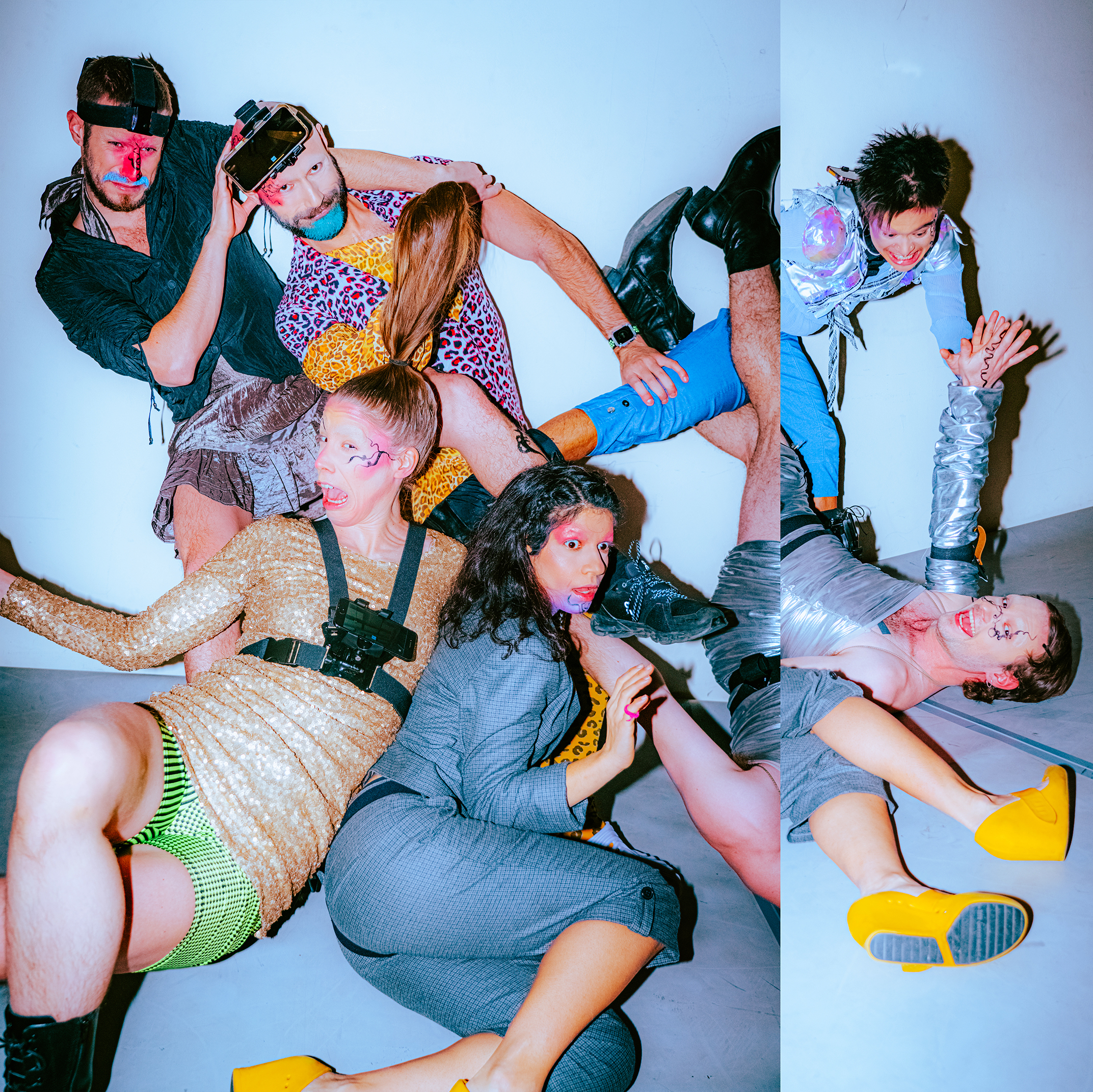
Which space-time emerges from recoding the “I” in individual_neoliberal? A technogenetic matrix has been choreographed to rehearse this inquiry. 3M0T1NG{/n3tw0rk1ng} (“emoting/networking”) works with a modular nexus of moving collaborators in a transindividual and ceremonial equation, constantly recomputing personal networking devices and dis-re-embodied emoticons in a multi-/intra-entity, emo-techno-spiritual soma. Intimations of eye-contact and image-selves disconnect essentialized “truths” from individualized feelings and expressions. Rendered are psychic dissociations from habituated emotionality, re-queering inter-relational communications and psychotherapies in “real” (hallucinatory) and “virtual” (sensational) time.
“For technogenesis to occur, what must be sought is a way to foreground the effects of unknowability that are virtually present in all movement. The incipiency of movement’s emergence must be tapped. […] Sensing bodies in movement are open systems that reach-toward one another sensingly, becoming through these relational matrices. As these bodies individuate relationally, they evolve beyond their ontological status, becoming ontogenetic. Technogenesis is the dynamic becoming of the sensing body in movement.”
— Erin Manning, Relationscapes (2009)
A [2-player] performance-test, performed for Y: NORMAL BODIES at Divadlo X10 in Prague (documentation images © Marek Koliha) preceded a [4-player] 3M0T1NG [process] for Studio Showings 2022 at DAS Graduate School in Amsterdam (documentation images © Thomas Lenden). A solo [satellitic] 3M0T1NG occurred at the Integration and Testing Laboratory of INPE (curated by Fabiane M. Borges), Brazil’s space research and technology center. Support for research began with DAS Choreography and continued via the Saison Foundation (Tokyo), SACi-E / National Institute for Space Research (São José dos Campos), IDlab – Academie voor Theater en Dans (Amsterdam), and Fonds Darstellende Künste (Berlin). [6-player] 3M0T1NG{/n3tw0rk1ng} pre-premiered at Uferstudios in Berlin (documentation images © Alicja Hoppel / Jelly Luise, & video © Walter Bickmann via Tanzforum Berlin) in Dec. 2022, supported by NPN-STEPPING OUT (Munich). The work and research culminated with DAS Choreography 2023 - ‘A Choice Among Others,’ supported by the Aart Janszen Fonds (Amsterdam) [documentation images © Thomas Lenden], with corresponding MA thesis “Transindividual Equations/Matrices: Schizoid Therapeutics for a Post-neoliberal Cyber-worlding” published in volume eight of Performance Philosophy. Continued experimentations/invitations of the performance-research have included workshops with the Saison Foundation (Tokyo), School for New Dance Development (Amsterdam), ligeti zentrum (Hamburg), apparat/us (Seoul), ImPulsTanz (Vienna), Dansehallerne (Copenhagen), as well as a VR exhibition with Projet Litote (Montreal).
“Turning then to our conceptual foil for this writing, Queer OS, writes Keeling (2014), ‘seeks to make queer into the logic of “an operating system of a larger order (McPherson, 2011 [citation added])” that unsettles the common senses that secure those presently hegemonic social relations that can be characterized by domination, exploitation, oppression, and other violences.’ Queer OS has three main strategies: problematizing logics of sense making, making visible that which is obscured, and disrupting relationships enabled through ‘lenticular logics.’ 3M0T1NG{/n3tw0rk1ng} also suggests an interesting idea about transparency as it might be understood through Queer OS. While the whole of the work was hyper visible, with bright lighting and large projections, the individual elements, the constructive components, were quite obscure. Much like many AI models, the operating logics were obscure to the audience. As the performance progresses, the videos begin to be warped through some video program making the images spin and swirl, fading in and out of the foreground of the projection. Similarly, while we can see the performers’ faces, we do not know what drives them to make the expressions they do. All we are left with are the effects on each other and us the audience, effects which are often strange to our expectations of what such expressions should elicit. Zander points out a lenticular logic relationship between transparency in the form of data and labor and individuality.”
— Elioa Steffen, PREMiERE
“What form have connections taken? What substance did they have? And in the future? 3M0T1NG{/n3tw0rk1ng} demonstrates that whether or not it is emotion that is ‘put on,’ some such signals are necessary to able to think about how to understand and respond to each other, and thus to connect. This process is put into hyperdrive through the projection of the bodies' screens. The reflections compound and float free of their objects. The more the performers try to embody this virtual condition, the appearance of expressivity and emotion increases, but its meaning is less to be found. The performers, and performance, become their own emotional blocks. Yet, aware as the audience always is of bodies moving around and responding to each other on stage, emotions continue to take nascent shape in the space between those bodies and how they represent themselves (on the body or the screen). It is through this space that we have been encountering difference (including in ourselves), feeling something, and forming new connections—🧬.”
— Michael Amico, PhD, researcher at the Center for the History of Emotions at the Max Planck Institute for Human Development
“In relation to this experience of alienation from oneself and one's own body, there is also the question of where the body is then, how the body manifests itself and what it means to embody and disembody, what is embodied and what is disembodied. In the piece, these questions are important in relation to the image of the body. Is it the image (of the other and of oneself in the other) that is embodied in the performers’ bodies? Or does the adoption of the image imply a process of disembodiment? Is the body what is proper and the image what is improper? Or vice versa? These questions may seem abstract, but I find them very interesting aesthetically and politically. Somehow, in the performativity of the bodies there’s an estrangement that makes me think of this emptiness Lacan mentions. As in the ticks or the symptoms of an illness, the body appears as a remainder that exceeds the image or that is not symbolizable in the image, generating a rupture of representation.”
— Marta Crespo Campos, School for New Dance Development





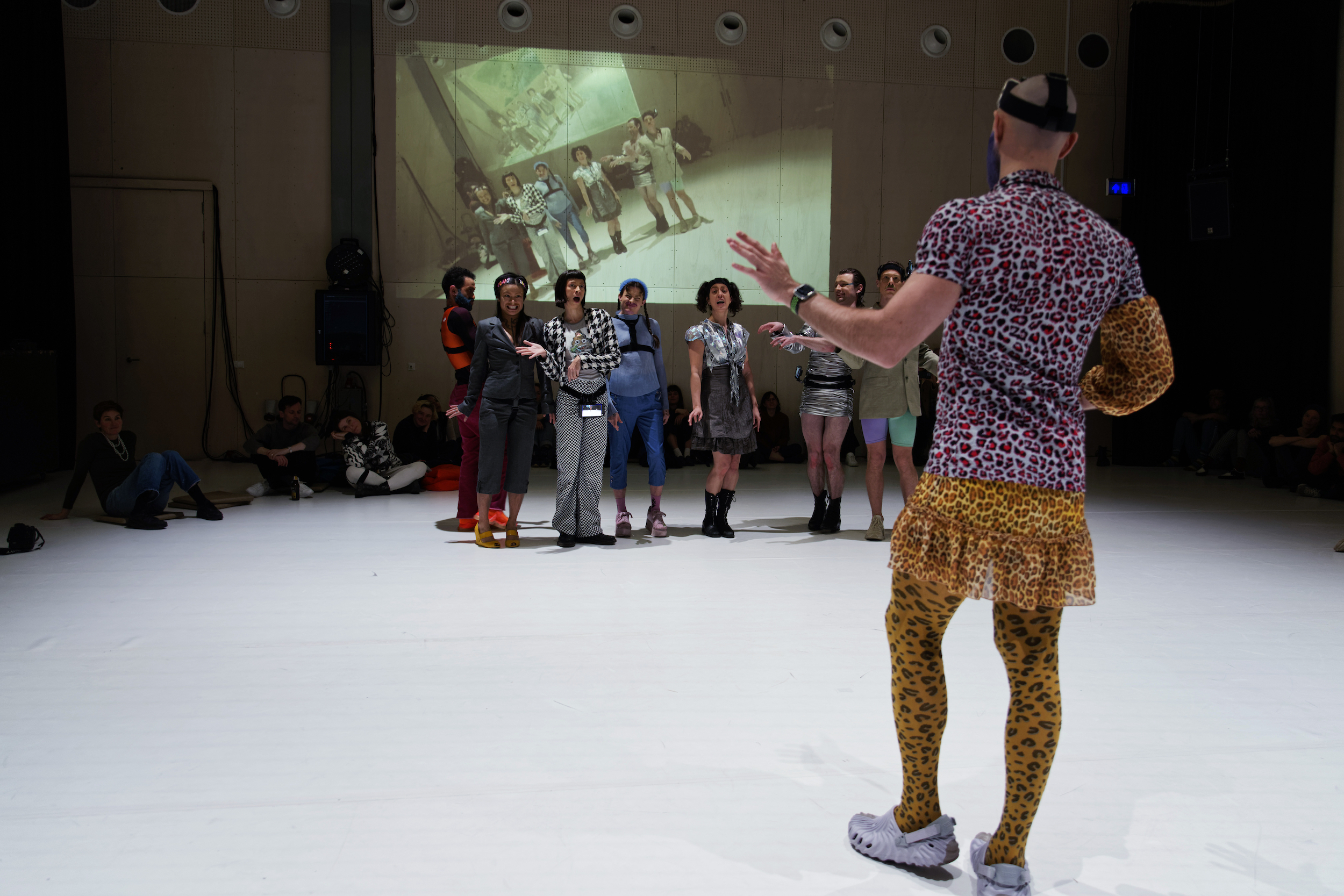












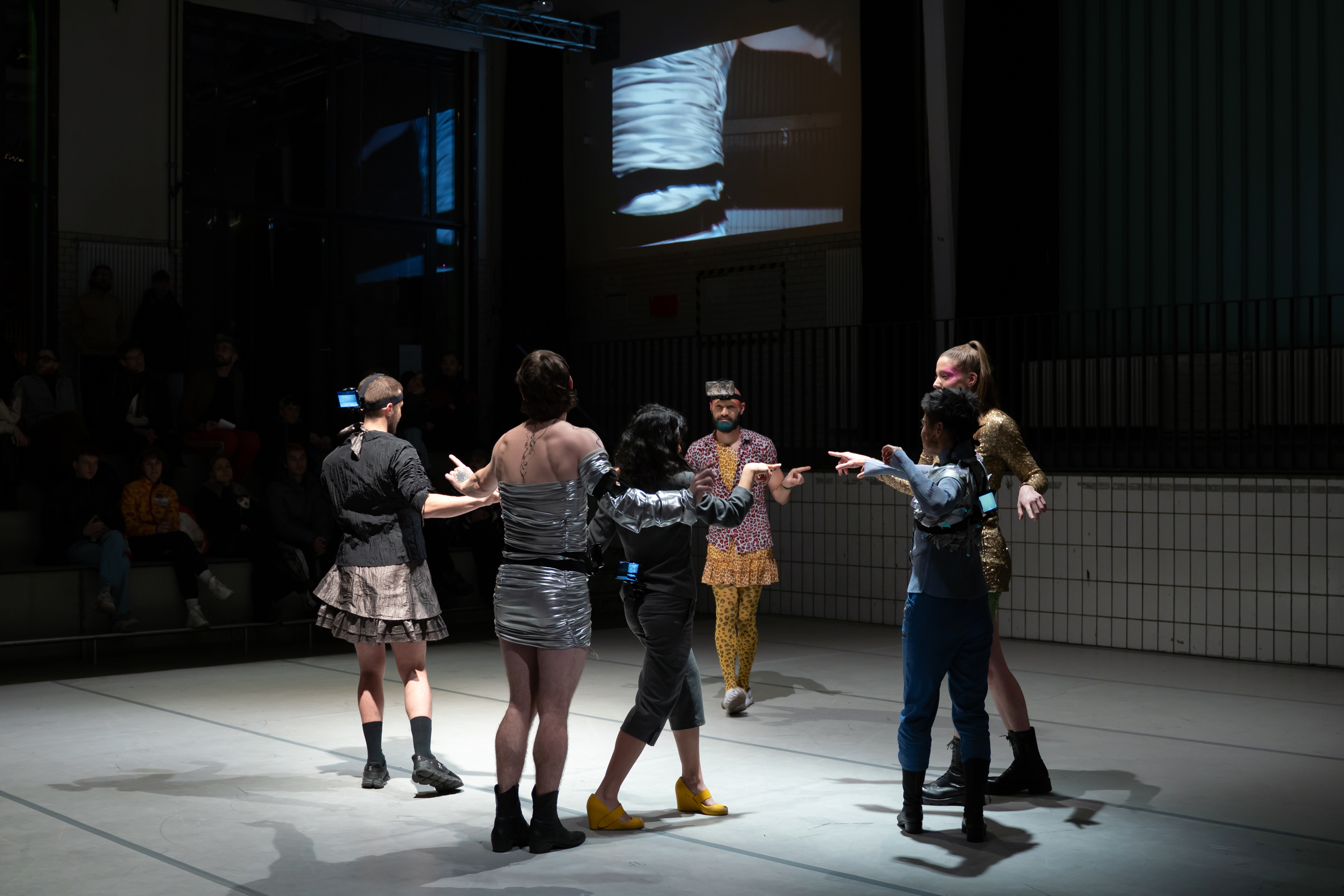


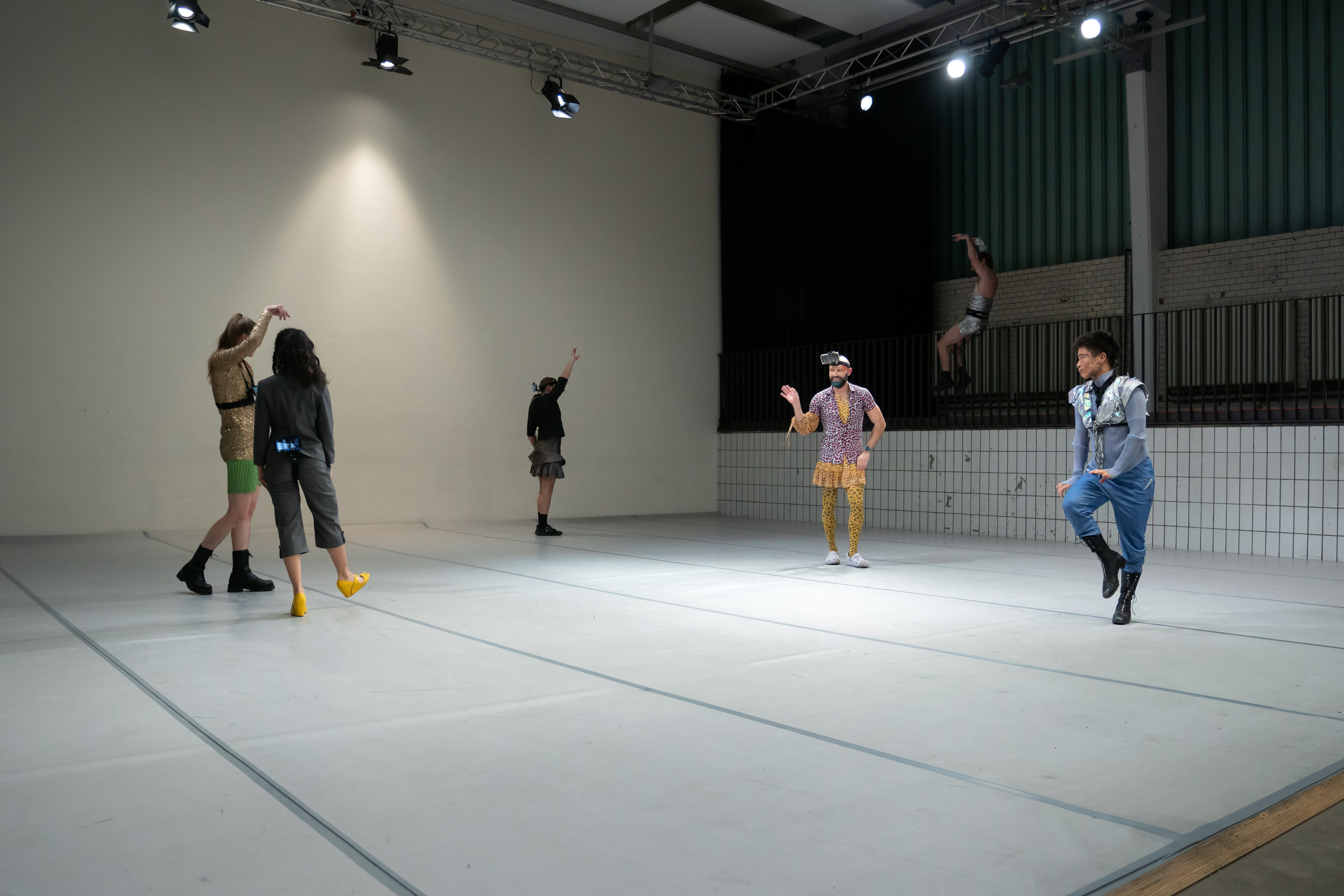
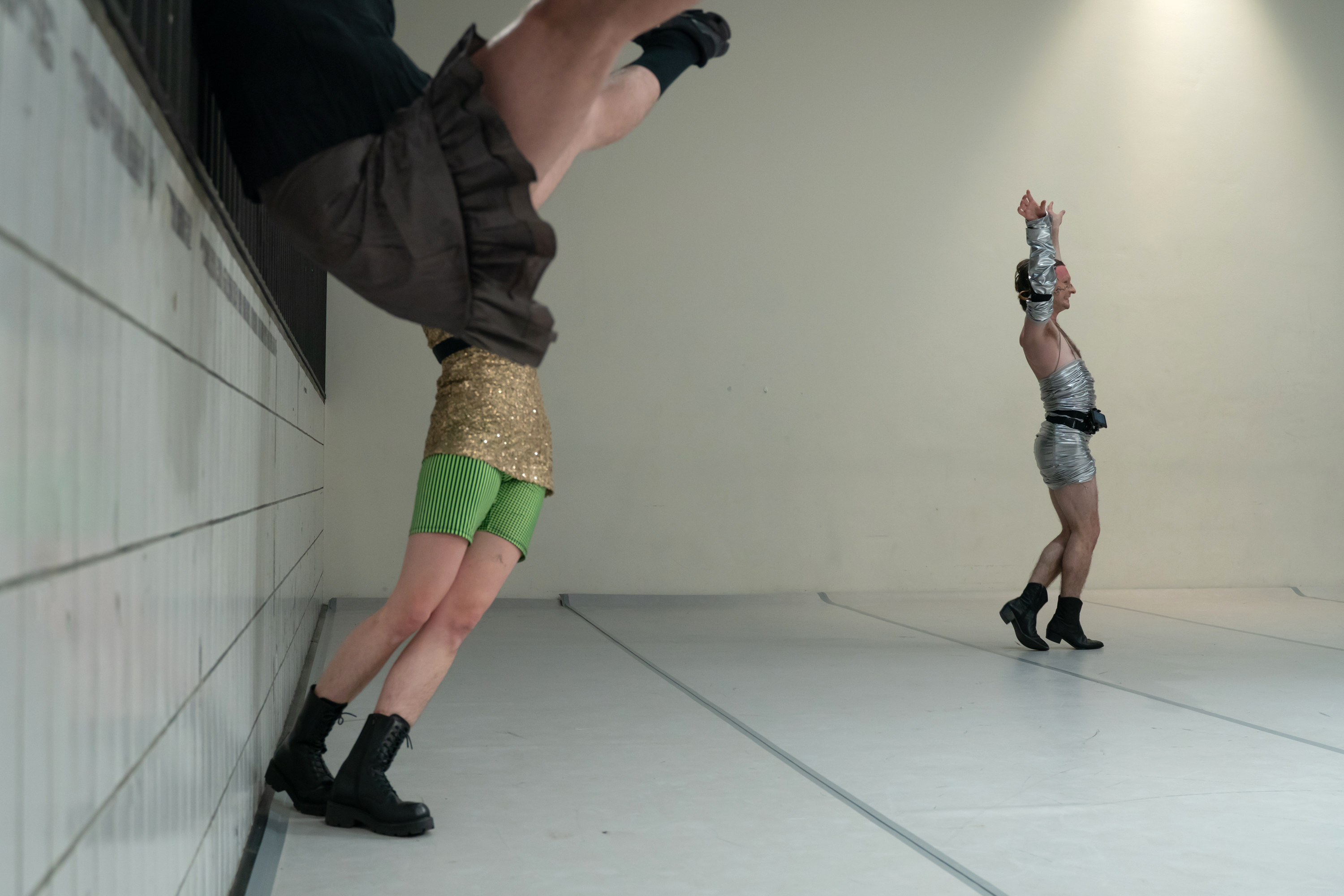












»Desktop
